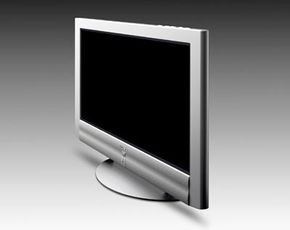Flat-panel Screens
Flat-panel televisions don't have projectors or a scanning electron gun, so they're very thin and lightweight. If you plan to set up a home theater in a smaller room, this is a definite plus -- you don't have to worry about hauling a giant direct-view or rear-projection model in, and you don't need to figure out where to position a projector.
The two primary types of flat-panel televisions are plasma and LCD. Plasma televisions create pictures with an array of cells that are a lot like fluorescent lamps. Flat-panel LCDs are similar to the screen of a laptop.
Advertisement
Plasma and LCD displays have great picture quality, but neither has a very good black level. They're cool and convenient, but they can also be expensive. LCDs are limited in size -- you can get much larger plasma displays or projection TVs. While plasma displays can be huge, they are susceptible to burn-in -- an image left on the screen for a long period can cause permanent damage. Recently, consumers have reported burn-in due to the logos some TV stations place in the corner of the screen.
The real benefit of a flat plasma screen is its compact size, and if you have a small theater space, this may be reason enough to shell out the extra money.
